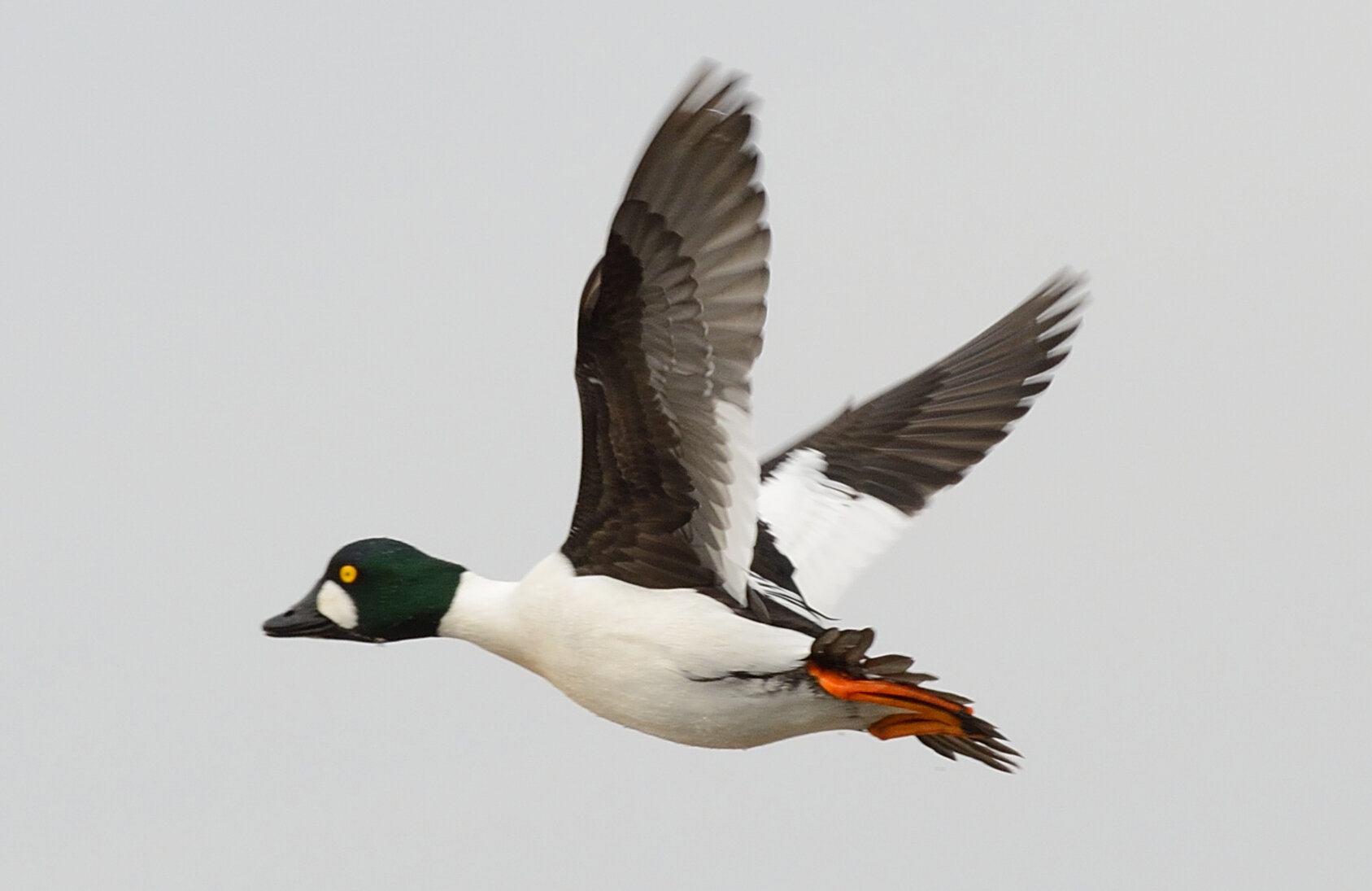History
Originally sculpted by glacial melt and retreat, the basins of the twin lakes now known as Hennepin and Hopper were once channels in the Illinois River. As the river meandered and crisscrossed through and around these basins, it created rich waterfowl habitat.
A Goldeneye duck during the fall migration at the Dixon Waterfowl Refuge in the Illinois River Valley.
In the 17th century when the first Europeans came across these basins, they were in awe of the numbers of wild fish and game, which had sustained Native Americans in the region for so long. Even into the late 1800s the area had the reputation as the “duck capital of the world” and a rich hunting tradition had developed there, including the establishment of many private hunt clubs.
By 1908, local landowners in the floodplain sought to make the area more amenable to farming by draining it. At Hennepin & Hopper Lakes, they formed the Hennepin Drainage and Levee District so they could install levees, ditches, drain tiles, and a drainage pump. The result was a landscape of corn and soybeans for most of the 20th century.
The site of the Dixon Waterfowl Refuge in 2000 before restoration began, drained and covered by agricultural fields.
In 2001, the Wetlands Initiative began restoration of the almost 3,000-acre site, first by turning off the pump and disabling the drain tiles. Fed by springs, seeps, and rainfall, the lakebeds refilled within three months and many native species of plants and animals began to return on their own.
Throughout 2002 and 2003, TWI’s early restoration work focused on reestablishing native plant communities in different habitats across the site and stocking the lakes with fish.
The site of the Dixon Waterfowl Refuge after restoration, lush with marsh and lake habitats.
The site was officially dedicated as the Sue and Wes Dixon Waterfowl Refuge in 2005, in honor of the Dixons' commitment to its ongoing restoration. And in 2012 it was designated a Wetland of International Importance under the Ramsar Convention on Wetlands in recognition of its extraordinary biodiversity.
Over the years, TWI has continued to improve the Refuge through special projects. The Oak Ridge Trail and Restoration Project, for example, restored rare savanna and marsh habitats in the center of the site and established the Marquis Oak Ridge Trail, which opened the Refuge’s interior to visitors for the first time.
In 2014, TWI acquired a new parcel of land at the south end of the Refuge, expanding its total size to more than 3,000 acres. Nicknamed Sandy Hollow, the tract has been restored to high-quality upland habitats including rare sand prairie and sand savanna. Visitors can hike Sandy Hollow’s figure-8 trail and take in the expansive view from the Pyott Pavilion, dedicated to TWI co-founder Al Pyott.
At the Refuge’s 10th anniversary in 2011, Al recounted the story of how the project came to be: A decade earlier no one in Illinois’ conservation community had believed it would be possible to return this piece of drained agricultural land to a mosaic of healthy native habitats. Today it is one of the state’s premier natural areas, recognized internationally for its rich variety of plant and animal life, and open to the public 365 days a year.

